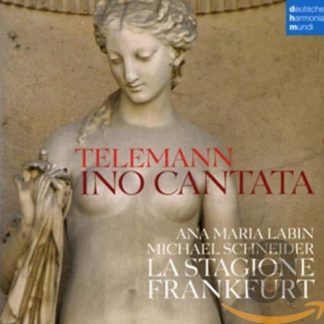Description
Artists
|
Cookin’ With Jaws And The Queen: The Legendary Prestige Cookbook Albums CD 1
CD 2
CD 3
CD 4
Craft Recordings celebrates the centennial of Eddie “Lockjaw” Davis with a brand new four-album collection featuring the tenor saxophonist’s sensational 1958 Cookbook albums with organist Shirley Scott. Cookin’ with Jaws and the Queen: The Legendary Prestige Cookbook Albums will be released on February 3, 2023 as a 180-gram vinyl 4-LP and as a 4-CD box set, featuring four classic soul-jazz albums, Cookbook, Vol. 1, Cookbook, Vol. 2, Cookbook, Vol. 3 and Smokin’, all recorded in stereo by famed engineer Rudy Van Gelder. Cookin’ With Jaws and The Queen, available for pre-order today HERE, was remastered from the original analog tapes by GRAMMY® Award-winning recording engineer Bernie Grundman. Produced by Nick Phillips and limited to 5,000 copies worldwide, the all-analog 4-LP edition was pressed on 180-gram vinyl at RTI, with each LP individually packaged in a tip-on jacket featuring the original Prestige Records artwork. The 4-CD and digital editions include three bonus tracks that were recorded at the 1958 sessions but did not appear on the original LP releases: “Avalon,” “Willow Weep For Me,” and an alternate recording of “But Beautiful.” Rounding out the vinyl and CD package is a deluxe booklet featuring photos of the recording sessions and new, in-depth notes by jazz journalist Willard Jenkins, who serves as artistic director of the DC Jazz Festival. When tenor saxophonist Eddie “Lockjaw” Davis and Hammond B-3 organist Shirley Scott walked into Rudy Van Gelder’s Hackensack, New Jersey, studio in 1958, it was clear that something special was about to happen. For about three years, Scott and Davis had been at the forefront of the soul-jazz sound, setting the golden standard for the tenor saxophone-organ combo. At 36, “Lockjaw” (aka “Jaws”) was already a veteran of the New York jazz scene, having spent much of the 1940s in the bands of Lucky Millinder, Andy Kirk and Cootie Williams. But the horn player was also a stylistic chameleon, shuttling back and forth between the classic big band era and the emerging sounds of hard bop. The 24-year-old Shirley Scott, meanwhile, was an emerging talent from Philadelphia who stood out as one of the few female musicians in the male-dominated world of jazz. Scott, who would soon become known as the “Queen of the Organ,” formed a creative partnership with Davis in 1955 and made her first recordings alongside the horn player. By 1958, they were a well-rehearsed duo. In his liner notes, Jenkins underscores this magical union with a quote from saxophonist James Carter: “Every successful artistic partnership has members who really work in simpatico toward a common goal, which in this case is to get the audience grooving and swinging so that it just cracks! [Scott] always manages to provide Lockjaw with the perfect underpinning to either soar or deepen to achieve the ultimate goal of a great musical encounter every time. Lockjaw really listens to Shirley and draws inspiration from her especially on ballads, but at higher tempos she puts a gentle, intense fire under him and brings out the best in Lockjaw.” Jenkins adds, “This is classic Black Vernacular jazz.” Accompanying Davis and Scott in the studio were multi-editor Jerome Richardson, who played flute, baritone saxophone and tenor saxophone. Bassist George Duvivier and drummer Arthur Edgehill rounded out the talented lineup. The sessions, which took place on June 20, September 12 and December 5, 1958, were recorded by 34-year-old Rudy Van Gelder at his Hackensack studio, while Bob Weinstock and Esmond Edwards of Prestige Records served as producers. The repertoire, which spans four albums, is a delicious combination of Davis-Scott originals and jazz standards. The Eddie “Lockjaw” Davis Cookbook, Vol. 1, originally released in June 1958, contains several highlights, including the bluesy radio hit “In the Kitchen.” Penned by Johnny Hodges, the nearly 13-minute, mid-tempo piece provides ample time for each musician to showcase their talents. The ballad “But Beautiful” is another standout track that, according to Jenkins, is highlighted by “Lockjaw’s opulent, expressive tone … [and] his beautiful legato and conversational solo.” Scott’s solo, he adds, is “soul personified in the keys.” The momentum continues with The Eddie “Lockjaw” Davis Cookbook, Vol. 2, released in December 1958 and featuring interpretations of the Hoagy Carmichael-Mitchell Parish standard “Stardust” as well as original compositions such as “Skillet” and the opener “The Rev.” The latter piece is characterized, as the title suggests, by an expressive conversation between the musicians, as between a preacher and his parishioners. Cookbook, Vol. 3, released in 1960, includes highlights such as the George and Ira Gershwin classic “Strike Up the Band,” the Shirley Scott original “The Goose Hangs High,” and the reflective “My Old Flame,” which, as Jenkins notes, “evokes the kind of wistful attitude from Jaws that one would expect from the lament of a lost love, appropriate to the title. Ms. Scott performs as if embodying the farewell to lost love – ‘See ya later, baby'”. The collection concludes with Smokin’, an album also from the 1958 sessions but originally released in 1964. On the self-aware set, the group jams with originals like “Smoke This,” “High Fry” and the self-titled “Jaws,” as well as classics like Johnny Burke-Arthur Johnston’s “Pennies from Heaven,” Edgar Sampson’s “Blue Lou” and the George Forrest-Robert Wight tune “It’s a Blue World.” The latter two pieces, Jenkins said, exemplify Davis’ unorthodox approach to ballad poetry. “Jaws displays a slightly energetic attitude toward ballads throughout and rarely revels in the moment. His balladic immersion is more that of someone who still has places to go, people to see, and food to cook; yet his reverence for a good ballad rivals that of his peers, it’s just that he’s always ready for a purposeful stroll rather than a casual linger.” Davis and Scott certainly had their work cut out for them after those phenomenal sessions. The two musicians continued to work together through the end of the decade, recording albums such as Jaws in Orbit, Bacalao (both released in 1959), and Misty (1963). However, despite the popularity of their work together, the artists went their separate ways, and Davis moved completely away from the organ tenor sound he and Scott had made famous. Scott soon teamed up with her husband, tenor saxophonist Stanley Turrentine, and recorded dozens of sessions as a leader over the course of their long careers. Davis, on the other hand, continued his path between soul jazz in small groups and the classical sounds of big bands, working with musicians such as Count Basie, Kenny Clarke, Gene Ammons and Johnny Griffin, with whom he recorded several “Tough Tenors” albums. But those five years Davis and Scott worked together had a major impact on the sound of soul jazz – and these four delicious albums are among their best work. |











